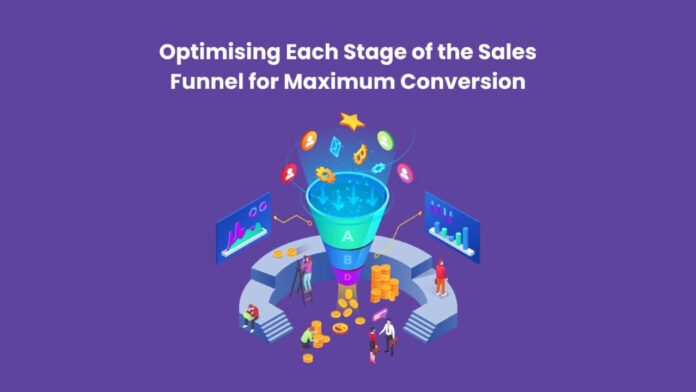In the competitive business world, sales are the lifeline of any organisation. To thrive, a business must attract new customers and efficiently guide them through the sales funnel towards making a purchase.
This funnel, a critical concept in marketing and Sales strategies, represents potential customers’ journey, from first becoming aware of a product or service to the final purchase decision. Optimising each stage of the Sales Funnel is paramount for maximum conversion, and in this blog, we will explore strategies to do just that.
Table of Contents
- Understanding the Sales Funnel
- Stage 1: Awareness
- Stage 2: Interest
- Stage 3: Decision
- Stage 4: Action
- Advanced Strategies for Optimising the Sales Funnel
- Leveraging Technology in the Sales Funnel
- Conclusion
Understanding the Sales Funnel
Before diving into optimisation strategies, it’s essential to understand the different stages of the sales funnel. Generally, it consists of the following phases:
- Awareness: Potential customers become aware of your product or service.
- Interest: Customers show interest and learn more about what you offer.
- Decision: They evaluate your offering against others and make a purchase decision.
- Action: The customer makes a purchase.
Stage 1: Awareness
The top of the funnel is all about creating awareness. At this stage, your goal is to reach as many potential customers as possible and make them aware of your brand and offerings. The key strategies here include:
- Content Marketing: Create informative, engaging content that addresses your target audience’s needs and pain points.
- SEO and SEM: Utilise search engine optimisation and marketing to increase your visibility in search engine results.
- Social Media Marketing: Leverage social media platforms to reach a broader audience and create brand awareness.
Stage 2: Interest
Once you’ve captured the attention of potential customers, it’s time to nurture their interest. Here, the focus is on educating them about your products or services and how they can resolve their issues or fulfil their needs.
- Email Marketing: Send targeted emails that provide more detailed information about your offerings.
- Educational Content: Offer webinars, e-books, or informative blog posts that delve deeper into your products or services.
- Interactive Tools: Use quizzes, calculators, or assessments to engage potential customers and provide them with personalised solutions.
Stage 3: Decision
In the decision stage, potential customers consider whether to purchase your product or service. This is where you need to stand out from the competition.
- Customer Testimonials and Reviews: Share success stories and reviews from satisfied customers.
- Free Trials or Demos: Offer free trials or demonstrations to showcase the value of your product or service.
- Comparison Content: Provide content that compares your offerings with competitors, highlighting your unique selling points.
Stage 4: Action
The bottom of the funnel is where the actual purchase happens. Here, the focus is on making the purchasing process as seamless as possible.
- Streamlined Checkout Process: Ensure that the checkout process is straightforward and user-friendly.
- Payment Options: Offer multiple payment options to cater to different preferences.
- Post-Purchase Support: Provide excellent customer service and support to ensure a positive post-purchase experience.
Advanced Strategies for Optimising the Sales Funnel
Beyond the basic strategies, there are advanced tactics you can employ to further optimise your sales funnel:
- Personalisation: Use customer data to personalise the shopping experience. Tailored recommendations and personalised communication can significantly boost conversions.
- A/B Testing: Regularly test different sales funnel elements to determine what works best. This can include testing website layouts, email campaigns, and call-to-action (CTA) buttons.
- Customer Feedback: Actively seek customer feedback to understand their needs and preferences. This information can be invaluable in refining your sales funnel.
Leveraging Technology in the Sales Funnel
Technology plays a critical role in optimising the sales funnel. Here are some ways to leverage it:
- CRM Systems: Use Customer Relationship Management (CRM) systems to track customer interactions and tailor your marketing efforts.
- Marketing Automation: Implement marketing automation tools to streamline your marketing processes and ensure timely and relevant communication with your prospects.
- Analytics and Reporting: Utilise analytics tools to track the performance of your sales funnel. This data will help identify bottlenecks and areas for improvement.
Conclusion
Optimising each stage of the sales funnel is crucial for maximising conversion rates. By understanding the customer journey and implementing targeted strategies at each stage, businesses can effectively guide potential customers towards purchasing. Remember, the key is to provide value at every step, build trust, and make the purchasing process seamless. With these practices in place, you can turn your sales funnel into a powerful tool for driving business growth.

